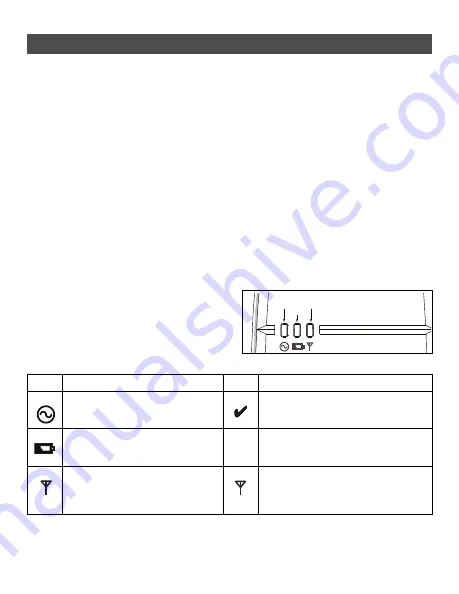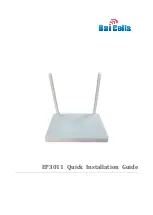
2
The WS4920 is a wireless repeater designed to extend the range of DSC one-way wireless
transmitters and to improve signal quality between the transmitter and receiver. Use the WS4920 to
remedy transmission problems caused by excessive noise or other interference, or by long distances
between devices and receivers. The maximum recommended number of WS4920’s per alarm
system is 4.
Each enrolled WS4920 occupies a zone slot. The WS4920 does not increase the number of
supported wireless zones. This is determined by the control panel’s wireless receiver. Only zones
requiring repeat functionality need to be enrolled on the WS4920. Ensure these zones are enrolled on
both the WS4920 and the receiver/control panel.
Unpacking
Ensure your package includes the following:
Controls and Indicators
Table 1: LED Definitions
Introduction
• One WS4920 (rechargeable Ni-MH battery included)
• One direct plug-in transformer (Not included in all configurations)
• Mounting hardware pack, including plastic wall plugs and screws
• Installation instructions
The WS4920 has three LEDs on the front. The
meaning of these LEDs is different when in
normal operational mode (cover on) than when
in Installer mode (cover off). See the table
below for descriptions of LED functionality.
The wall tamper must be closed for the LEDs
to operate.
Figure 1: LED Indicators
LED
Normal Mode
(cover on)
LED
Installer Mode
(cover off)
Green On: AC present
Flashing: No AC, battery good
Off: No AC and dead battery
Green 1 flash: Enrolled
Flashing: Placement test active
Red On: Battery not connected
Off: Battery good (if AC on)
Flashing: Low battery
Red Flashing: Zone not enrolled
Yellow On: RF jam present
Off: No RF jam
Yellow On: Repeater placement test “bad”
Off: Repeater placement test “good”
Flashing: Sporadic interference or valid
transmission packets detected
Green
Yellow
Red
X
X




























